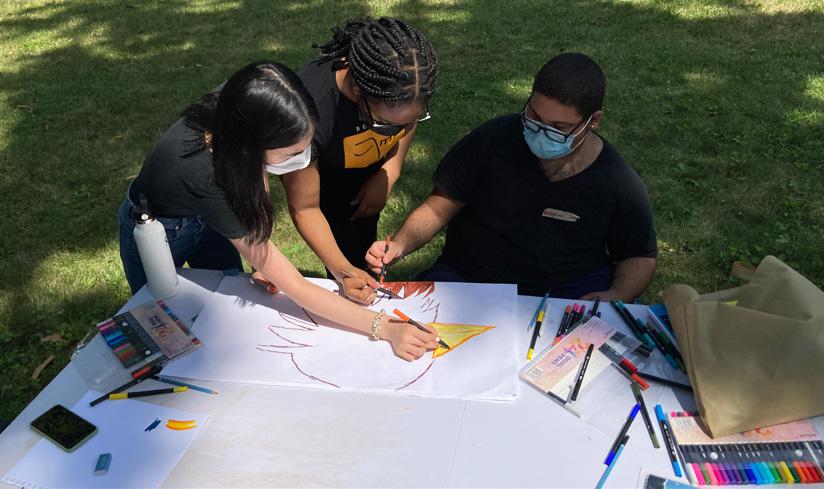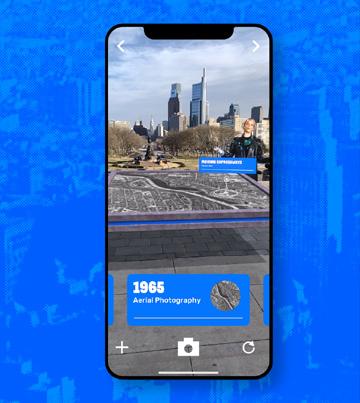
11 minute read
Centers
from Stuart Weitzman School of Design Impact Report
by University of Pennsylvania Stuart Weitzman School of Design
The Synergy of Centers
Centers at the Weitzman School deepen its impact-driven mission and keep it responsive to evolving social needs. In this campaign alone, new academic centers have launched—and quickly achieved success—in public art, the preservation of civil rights, urbanism and ecology, and energy policy.
The Architectural Archives
The Architectural Archives plays a pivotal role in the education of Weitzman students, offering unique opportunities to interact with drawings, models, and other archival materials that energize and elevate conversations about the creative process. Archives exhibitions, publications, and programs also serve alumni and a widening international public. Some pivotal gifts and exhibitions made possible by the campaign are highlighted below:
— Over the course of the campaign, important acquisitions of materials related to the work of Louis Kahn came from Urs Buttiker, Nathaniel Kahn, and Sue Ann Kahn. Significant additions to existing Archives collections include gifts from
Paola Frascari for the Marco Frascari Collection, and Carol McHarg for the Ian Lennox McHarg Collection. Clare Yellin made a major donation of presentation drawings and photographs related to metalworker Samuel Yellin. Feodore
Pitcairn contributed two pastel renderings by Richard Neutra, and William Peck donated a pair of wrought iron gateways that were designed by Frank Furness for his brother Horace Howard Furness.
— New collections were established related to the following architects and firms: Steven Goldberg, Herman Hassinger, KieranTimberlake, Walter Livingston, John Nicolais, Laurie Olin, Anant Raje, Louis Sauer, Frank Schlessinger, and Marianna Thomas. Two drawings by Gertrude Olmsted, one of the first women to enroll in design studios at Penn (1925–26), were given by William and Sally Rhoads.
— The Philadelphia Museum of Art donated one of the neon griffins designed by
Robert Venturi and Denise Scott Brown from the Museum’s West Foyer, along with selected furnishings from their Members Lounge. David and Louise Trubeck also contributed materials related to their house on Nantucket, designed in 1970–71 by Venturi and Rauch, Architects.
— Between 2013 and 2021, the Architectural Archives collaborated on the organization of a number of major traveling retrospective exhibitions. These included Louis Kahn: The Power of Architecture (organized by the Vitra Design
Museum; 2012–17), an exhibition presented at eight venues across Europe, Asia, and the United States and seen by over 450,000 people; and Experiments in Environment: The Halprin Workshops, 1966–71 (organized by the Graham Foundation, Chicago; 2014–16), and seen at venues in Chicago, New York, and San Francisco.
— The Archives played a lead role in organizing a series of three exhibitions marking the 50th anniversary of the publication of Ian McHarg’s Design With Nature.
The project, entitled Design With Nature Now, was funded through a grant from the Pew Center for Arts and Heritage. Two more grants from the Pew Center for Arts and Heritage made possible the exhibitions of Shofuso and Modernism, which drew heavily on the Archives collections and was guest curated by William Whitaker, and
What Minerva Built, an exhibition focused on America’s first independent female architect, Minerva Parker Nichols (1863–1949).
Additional exhibitions organized by the Archives and presented in the Harvey & Irwin Kroiz Gallery included White Towers Revisited (2015); Barton Meyers: Works of Architecture and Urbanism (in collaboration with the University of California Santa Barbara, Art, Design and Architecture Museum; 2015–16); Harriet Pattison: Gardens and Landscapes (2016); KieranTimberlake: Drawn + Quartered (2016); Back Matter: The Making of Robert Venturi’s Complexity and Contradiction (2016–17); Mario Romañach: Do You Love Architecture? (2017–18); and Drawing: Laurie Olin (2018).
The Center for Public Art and Space
The Center for Public Art and Space (CPAS) is a platform for artistic research and civic engagement that supports Penn faculty, staff, and students in incubating public art projects and securing grant-based funding. The Center advances the work of exceptional MFA students as artists in residence, and partners on critical initiatives that bridge the campus and the public realm across Philadelphia and beyond. Highlights of campaign-fueled accomplishments include the following:
— OverTime Grant and Augmented Reality App Launch The Center received a $100,000 grant from the John S. and James L. Knight
Foundation to produce OverTime, its first augmented reality tour, in partnership with Monument Lab. OverTime is a public art and technology platform designed to allow users to dig deeper into the living history of a city. The project launched in Philadelphia in spring 2021, and was featured in The New York Times, Fast
Company, and Philly Voice.
— “Town Hall” Transnational Symposium CPAS co-hosted Monument Lab’s 2020 transnational Town Hall symposium with partners at the Goethe-Institut and the German Federal Agency for Civic Education. Keynote participants included Paul Ramírez Jonas, Cannupa Hanska
Luger, Bonaventure Soh Bejeng Ndikung, Seph Rodney, Daniela Schiller, Jasmine Wahi, Mabel Wilson, and Mirjam Zadoff. Over 900 attendees gathered for the two-day event.
— Graduate Researchers and Visiting Scholar In its first years of operation, CPAS granted a Graduate Artist Residency to David Johnson (MFA’20); engaged Allison Nkwocha as a Graduate Researcher; and invited critical geographer Sue Mobley as its first Visiting Scholar-in-Residence.
OverTime with Ursula Rucker, augmented reality app, Philadelphia Art Museum steps, March ’21. (Images, top to bottom: production still, Lori Waselcuk/Monument Lab.)
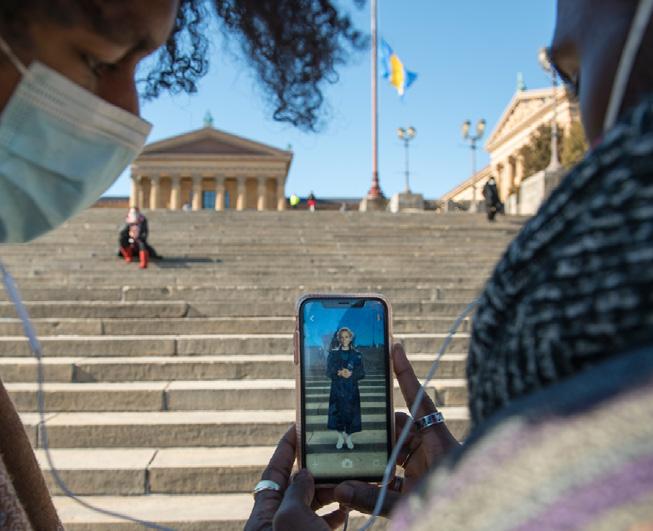
The Center for the Preservation of Civil Rights Sites (CPCRS) advances the understanding and sustainable conservation of heritage places that commemorate American civil rights histories and Black heritage. Launched in 2020, CPCRS has already had far-reaching impact in academia, and more broadly, through public events, as highlighted below:
— Through the generosity of Matt (W’01) and Erika Nord along with Kevin (W’83) and Erica Penn, an endowed directorship for CPCRS was established. The Matt and
Erika Nord Director, Center for the Preservation of Civil
Rights Sites, will help ensure the continued vitality of CPCRS in perpetuity.
— The Weitzman School Graduate Program in Historic
Preservation continues its collaboration with Kwesi
Daniels, PhD, department head, and his colleagues at Tuskegee University Architecture Department on courses focusing on historic preservation at civil rights heritage sites in Alabama.
— A monthly series of virtual talks raises visibility, deepens discussion, and advances scholarship about civil rights heritage and the issues of equity, memory, and design that preservation brings to light. Each CPCRS Dialogue features a scholar, practitioner, or artist making singular contributions to the understanding of civil rights heritage.
— In November 2021, CPCRS will host a virtual symposium to address the urgency of preserving sites, stories, and organizations representing the heritage of civil rights. Scholars from around the country will contribute talks and participate in roundtable discussions.
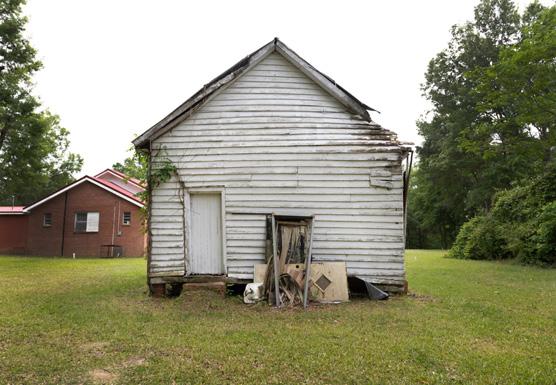
— CPCRS actively catalogs resources that explore the intersection of civil rights histories, Black heritage, and the built environment. This list includes groundbreaking publications from the 19th century to today. The list is updated daily to reflect the latest work in the field.
CPCRS supported four summer interns in 2021, from both Penn and Tuskegee University, to work on documentation projects preserving Black heritage sites in the Philadelphia region and Alabama. These internships included research and writing for nominations to the National Register of Historic Places, under the guidance of Associate Professor of Preservation Aaron Wunsch and Sarah Lerner (MSHP’20), Manager, Administration and Communications at the Center.
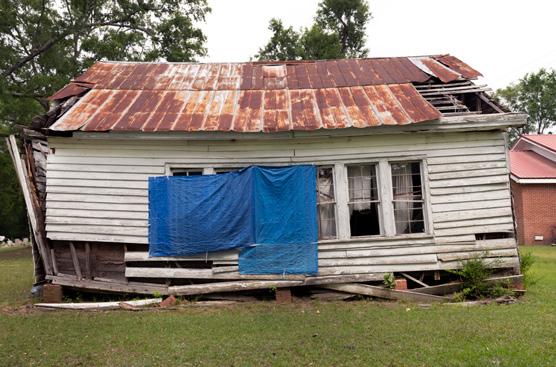
The Armstrong School, in Marion County, Alabama, was built around 1906 by a rural African American community collaborating with Tuskegee University architecture faculty. It was a prototype for Rosenwald Schools, later built by the thousands in the segregated South.
The Ian L. McHarg Center for Urbanism and Ecology
The mission of The McHarg Center is to bring environmental and social scientists together with planners, designers, policy-makers, and communities to develop practical, innovative ways to improve the quality of life in the places most vulnerable to the effects of climate change. In only four years, the Center has accomplished a great deal, including the following:
— The Harry T. Wilks Family Foundation secured the success of The McHarg Center in perpetuity, through a gift to name its directorship.
— The 2017 launch of the Center helped mark the 50th anniversary of McHarg’s landmark book, Design With
Nature, and established a critical climate and design research hub within the Weitzman School.
— The Center’s June 2019 public debut of Design With
Nature Now included a major international conference, three exhibitions, and a new book published by the Lincoln Institute of Land Policy. — The McHarg Center held the largest climate event in Penn’s history, “Designing a Green New Deal,” in the fall of 2019, featuring dozens of policy, design, and advocacy experts discussing the scale, scope, and pace of transformation that the climate crisis demands. More than 1,400 people attended, and over 10,000 watched via livestream.
— Four major research groups have been established within The McHarg Center, each led by standing faculty in landscape architecture: Biodiversity, led by Richard Weller and Karen M’Closkey; Climate
Policy, led by Billy Fleming and Nicholas Pevzner; the
Environmental Modeling Lab, led by Sean Burkholder and Keith VanDerSys; and Public Realm, led by Sonja Duempelmann and Chris Marcinkoski.
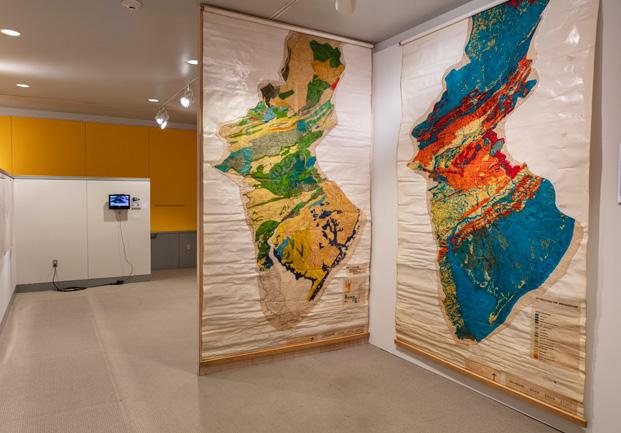
Design With Nature Now exhibition, 2019.
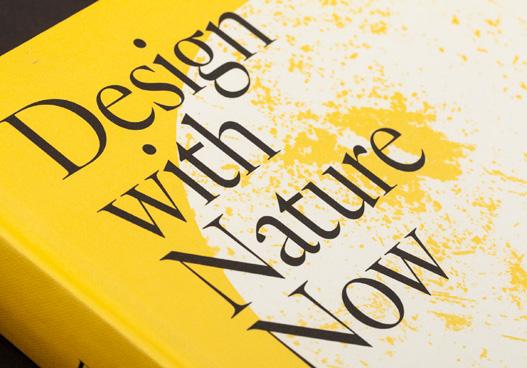
Kleinman Center for Energy Policy
The mission of the Kleinman Center is to create the conditions for policy innovation that support a just and efficient transition to sustainable energy. The Center received a renewal gift of $30 million that established an endowment fund that ensures its permanence and supports all programming, which is highlighted below:
— Students received research grants, were able to attend conferences, held internships and research assistantships, and benefited from programmed events.
— The faculty research budget funded research grants and policy outcome-tracking, publications, workshops, and convenings with decision makers and policy influencers.
— The Kleinman Center held events such as the annual
Carnot Prize, Energy Week at Penn, the annual public lecture series, the leadership series, and the energy economics and finance seminar.
— Approximately 40 digests and papers have been published by visiting scholars, faculty, research staff, and research assistants.
— The University has made an additional commitment for three new faculty positions in energy policy, to enhance the impact and visibility of Center research on pressing global challenges. New faculty attract additional teams of researchers and students to Penn. Already, the Center has hired Jennifer Wilcox as Presidential Distinguished Professor of Chemical Engineering and Energy Policy. Wilcox is currently on public service leave as the principal deputy assistant secretary for the U.S. Department of Energy’s (DOE) Office of Fossil Energy and Carbon Management. Offers to other outstanding candidates are pending.
— Additional gifts to the Kleinman Center have funded specific projects, such as the application of robust decision-making tools to solve local energy transition challenges. These projects have yielded papers, policy digests, podcasts, and conference presentations that resulted in meetings with decision makers, testimonies, and quotes and references in journals and the media (e.g., The New York Times, The Philadelphia
Inquirer, E&E News).
— With campaign support, an Associate Director of Academic Programming and Student Engagement was hired for the Kleinman Center.
Stephanie Carlisle, lecturer at the Weitzman School of Design, doing fieldwork in a ger settlement on the outskirts of Ulaanbaatar, Mongolia. With a Kleinman Center grant, Carlisle and Nicholas Pevzner, assistant professor in Landscape Architecture, explored the urban design and energy transition challenges for decarbonizing the city, from quasi-informal ger communities where families burn raw coal to survive frigid winters, to the rest of the city, which gets electricity from Soviet-era coal-fired power plants.
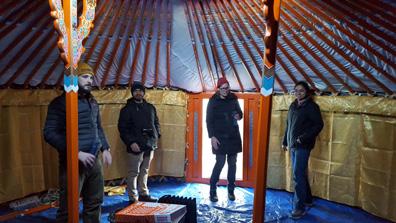
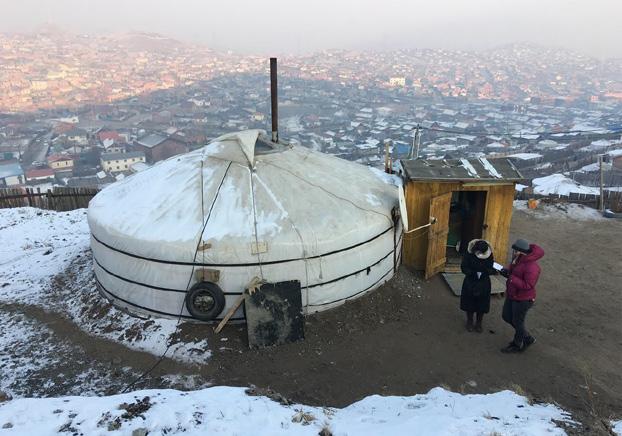
Stephanie Carlisle (second from right) stands with Weitzman students in a typical Mongolian dwelling called a ger, assembled on Penn’s campus. During winter, students monitored the thermal performance in order to study how Mongolian housing might transition from burning coal to electric heat.
PennPraxis
With substantial growth in gift support over the last three years, PennPraxis has evolved from the planning and preservation practice arm of the Weitzman School into an engine for diverse and ambitious interdisciplinary collaborations that advance design justice. Campaign gifts have made it possible for Weitzman students and faculty to initiate high-impact projects and expand their reach, as highlighted below:
— The size, complexity, diversity, and impact of commissions have grown substantially, with
PennPraxis responding generously to each community and their potential. Examples of broadening reach and influence include the citywide water and environmental justice plan for Pittsburgh; housing relief plans for six major US cities; the 25-year comprehensive plan for the Lehigh Valley; and exuberant, politically engaged design studios for 300 low-income youth of color in New York City through The Fresh Air Fund.
— Powered by students under good leadership,
PennPraxis projects like the climate-smart design for a 14-mile section of the Delaware & Lehigh National
Heritage Corridor have won national awards, including a top honor for student collaboration from the American Society of Landscape Architects. — PennPraxis created the Design Fellows Program in June 2018. In its first three years, the program deployed a total of 252 students and young alumni to work together on challenging design problems, yielding remarkable outcomes. PennPraxis now engages students and alumni from all parts of the
School in creative, beyond-the-market opportunities that help students develop agency and cultivate the next generation of leaders.
— The Design Fellows Program is now a distinguishing feature of the Weitzman School, with many prospective students stating that the visible accomplishments of PennPraxis—and the support it gives activist designers—are important reasons for choosing Penn. The Design Fellows Program and the PennPraxis Studio+ initiative—a multidisciplinary design/build studio that strengthens the School’s relationships with Philadelphia communities—is energizing the push for equity.
Fresh Air Everywhere Studio students work on exquisite corpse drawings in groups of three, with each group creating a third of the drawing without seeing what other groups have already drawn.
